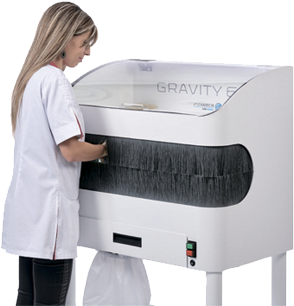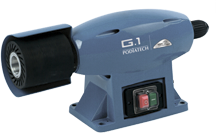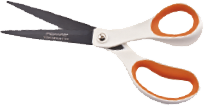HIGH Neutral Orthosis KitTM
(high arch)
P24PATH_NEU_HI

- Custom-made orthoses orthoses. Custom-made insoles Custom-made insoles in the Open Clinic
- Models of insoles for orthopedic treatment
- Purpose of customized orthopedic insoles
- Special features of custom-made insoles
- orthotics
- Why order custom-made insoles?
- Accesories
- When and how long should a corset be worn?
- Results
Custom-made orthoses orthoses. Custom-made insoles Custom-made insoles in the Open Clinic
Custom-made orthopedic insoles increase stability when walking, reduce foot fatigue and improve overall well-being. Patients with musculoskeletal abnormalities or after serious injuries should use these products. The insoles are made from natural and modern high-tech materials that give the shoe insoles durability and absorb moisture. They must have hypoallergenic and aromatic properties.
The production of custom-made shoe insoles takes place:
- Examination of the patient. Before the product is manufactured, a consultation takes place with a specialist.
- Tailor-made fitting: Our specialists take into account all the patient's wishes and create the most comfortable insoles.
- Choosing the right material. The Open Clinic team selects the right raw material for the orthoses.
- Adjust. If necessary, the aid is adapted to the footwear.
Models of insoles for orthopedic treatment
- VP-1 – recommended for people in the early stages of flat feet and for people who spend a lot of time on their feet. The design allows for comfortable heel positioning and supports the arch of the foot.
- VP-2 – used for the most common longitudinal variant of flat feet. Good support of the musculoskeletal structures. A rigid supinator is placed under the heel area, and the arch elements are supported by dense padding.
- The VP-3 is effective in combined pathologies, e.g. E.g. with a sprained foot, when the talus and the rest of the foot do not work in unison. It has a forefoot support element and an insole that ensures correct heel alignment.
- The VP-4 is a detorsion construction that supports the longitudinal arch of the foot, the heel area and the forefoot. For this purpose, the orthopedic device is equipped with a physiological supinator. The forefoot is held in a physiological position by the pronator and the thumb is fixed by a special rigid adhesive element.
- VP-5 – used for valgus deformity, i.e. outward tilting of the feet. The product has built-in elements to support the longitudinal area of the foot and supinators to fix the heel and forefoot areas.
- VP-6 – recommended for deformities that require the big toe to be exposed laterally. For this purpose, the product is equipped with a dense insole and an integrated footrest. The surface of the material is studded to prevent calluses and hard corns.
- The VP-7 features a pronator on the edge of the foot and a heel support system. Particularly effective for clubfoot, shortened feet and prolonged wearing of uncomfortable high-heeled shoes.
- VP-8 – gives pronator feet the correct position and supports the big toe. Used for various types of clubfoot.
- VP-9 – compensates for shorter feet. It has a lowered section under the heel, compensators and support pads installed along the longitudinal arch.
- VP-10 – prevents scarring and ossification as it has tubercles throughout.
Purpose of customized orthopedic insoles
Framed custom orthotics achieve the best results and are recommended:
- in severe stages of longitudinal and transverse flat feet (except for fixed deformities);
- in the presence of other deformities, e.g. forefoot adduction, cavus foot;
- if the difference in length between the right and left feet is approximately the same;
- if the feet are the same length, but the proportions of the foot differ from the average (which is accepted when making ready-made insoles).
Special features of custom-made insoles
The following aspects are taken into account when custom-made insoles are made.
- the weight of the person for whom the insoles are made (the strength of the skeleton used depends on this);
- the individual characteristics of the foot;
- the shape of the forefoot of the shoe in which the insoles are to be worn.
All of these factors ensure that the insoles are very comfortable and at the same time have a good corrective effect.

The shape and size of the skeleton as well as the shape and size of the metatarsal shaft are selected using the FOOTSCAN software.
orthotics

Movement is life. This statement is difficult to refute. For every person, exercise is part of life and being active is an essential part of life. However, it is important that your feet are healthy.
The problem is that evolution assumed that humans would constantly be on the move, exploring new areas and adapting.
The human foot is designed to provide maximum traction when moving over different terrains and surfaces. It is not designed to run on a flat surface.
Therefore, the feet deform over time in these conditions. One of the most common problems is flat feet and valgus deformities.
Why order custom-made insoles?
Every person is unique, and that also applies to their feet. At least as far as the condition and degree of deformation are concerned. That's why there are no one-size-fits-all solutions here. You have to make custom insoles based on an impression of your foot. This is the only solution that really helps.
The specialists at the problem foot center can make such insoles for you. All you need to do is call or apply on the website and then visit the center. Vocation!
Accesories

Handy, easy-to-use device for determining the length, width and type of the patient's feet. Saves time adjusting 3 Feet patho-logic
ABFEETREVE12

A unique grinding device for the final adjustment of the product to the patient's shoe.

The G1 is a classic, compact device for the final fitting of insoles.
PPGPONCESEUL

Special scissors that can be used with adhesives for precise and easy work with orthopedic products.
P99CISTITANIUM

Use this box with designated compartments to store additional correction supplies used during work.
P81RANKPATHO

Double-sided stand for easy storage of PATHO-LOGIC® 3-foot orthoses. Maximum capacity of up to 120 pairs (60 on each side).
P81MIDDISPLAYPOD
When and how long should a corset be worn?
The Cheneau brace is indicated for idiopathic scoliosis with an angle of curvature of 16 degrees or more on the Cobb scale and for actively developing scoliosis with a smaller angle of curvature. The doctor may also prescribe a corset in preparation for spinal surgery for various pathologies and as a preventive measure in the post-surgery period.
The duration of using the corset is determined by the doctor. Often it should be worn until the bone has stopped growing, i.e. until around the age of 18. Whether the growth zones are 'closed' can be determined using the Risser test. If treatment is stopped, there is a high probability that the scoliosis will return to its original state after just a few weeks and the situation will worsen.
The Chenot corset is worn standing over a thin t-shirt (preferably seamless for comfort) and then slid over the pelvis while lying on your back and fastened with Velcro. In most cases, doctors recommend wearing the corset for 21 hours a day to achieve the desired effect.
In the first 2 weeks, the wearing time is gradually increased until the desired effect is achieved.
Another feature of the Chenot corset is that it is also worn at night and requires daily exercise (1 hour or more per day) to maintain muscle tone.
Results
First visit to the doctor after wearing the corset after 1-1.5 months. After that, it is advisable to visit an orthotist and/or orthopedist every 3 months to check the progress of the spinal reconstruction and, if necessary, adjust the design itself or the method of use. The position of the vertebrae gradually changes, so the strength of the orthosis must be adjusted in certain areas in order to maintain the effectiveness of the treatment.
If necessary, the corset can be changed every six months to a year. This is necessary because young patients grow and their physiology changes, so the previously used device may not fulfill its primary purpose. The effect can be observed with the naked eye.
The basic principle is to only treat with the Chenot corset until growth is stopped and the musculoskeletal system is strengthened. The therapy shows its maximum effectiveness until the age of 16. During this time the skeleton is actively growing, is 'formable' and can be easily corrected.
The addition of the corset should also be done under the guidance of a specialist. It should be a gradual process as the body needs to get used to going without support. Weaning occurs in the same way as habituation - with each day the wearing time is reduced.
In many cases, the correct use of a corset is considered an alternative to surgery. This ensures that the body does not have to deal with the stress of surgery, its side effects and subsequent rehabilitation.
Read more:- Customized orthoses.
- Orteka – made-to-measure orthoses.
- Field reports on custom-made orthoses.
- Medico Ortho reviews.
- orthoses for children.
- Orthopedic custom insoles Moscow.
- What does Ortho mean?.
- production of orthoses.
